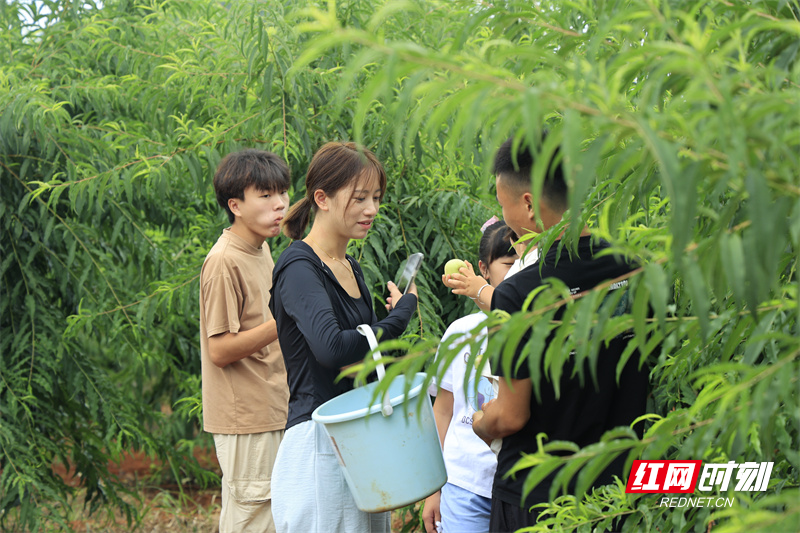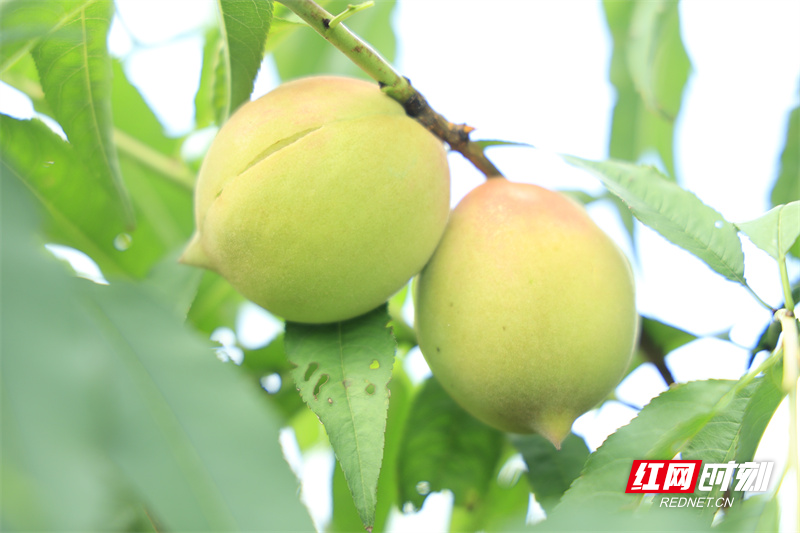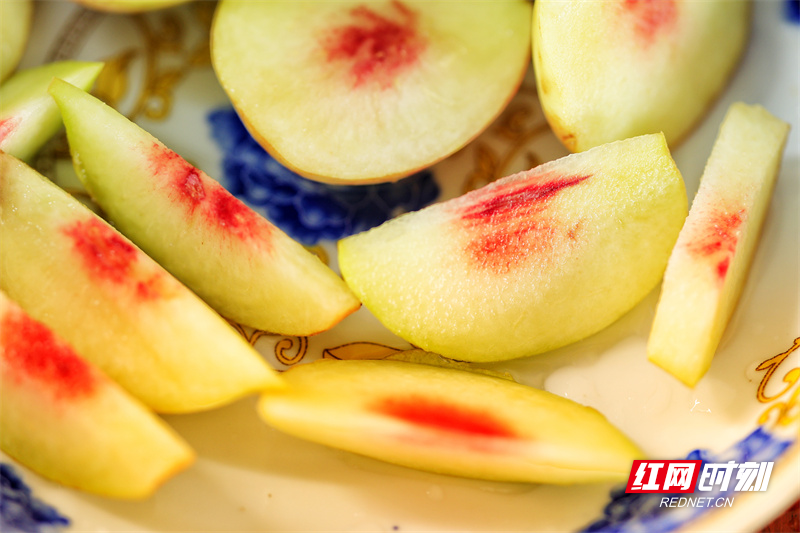Yingzui peaches increase villagers’ income
2024-08-05
In recent years, Guiyang County has made efforts to develop characteristic agricultural products.

At the Chuanhou Ecological Orchard in Rongfeng Village, Chonglingjiang Town, Guiyang County, over 600 mu (40 hectares) of Yingzui (eagle beak) peaches have got ripe, and villagers were busy harvesting them recently.

There were also some tourists picking the peaches. “This peach is very sweet, and I really like it,” said a tourist.
Yingzui peach is a niche peach variety originating from Lianping County of Guangdong Province, with its tip like the beak of an eagle, and is deeply loved by consumers for its crisp flesh, abundant juice, and strong sweetness.

In 2019, Xiao Zhongjun, who worked in Guangdong, decided to return to his hometown to plant Yingzui peaches with a unique taste and promising market prospects.
He transferred 600 mu (40 hectares) of land and built the Chuanhou Ecological Orchard to plant Yingzui peaches, watermelons and other fruits through the cooperation of villages and enterprises.

After years of development, the local Yingzui peaches have come into the market and have been sold to Shenzhen, Shanghai and other places, with an annual output of over 20,000 kilograms and an expected income of over 400,000 yuan. Rongfeng Village can receive a fixed dividend of 50,000 yuan per year, and more than 20 villagers have achieved employment at their doorstep.

According to Xiao Zhongjun, due to the rainy weather, the yield of Yingzui peaches this year has decreased compared to last year. However, with the influence of other factors such as the improvement of appearance and taste, the peaches can sell for 20 yuan per kilogram. Next, he will strengthen technical management, improve production and quality, and establish the reputation of the Yingzui peaches produced on red soil.
In recent years, Guiyang County has worked to strengthen characteristic industries based on local conditions, revitalize resources, and create the planting model of “one village, one product”, in a bid to help increase the income of the village collective economy and villagers.




